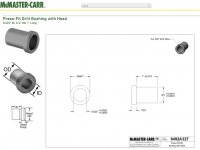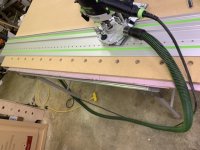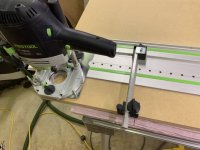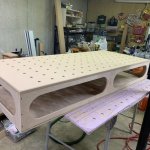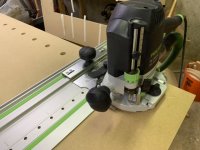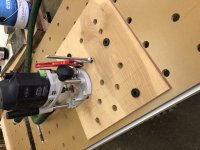Hello all,
I want to use an MFT/3 replacement top as a ‘template’ to make a larger top, I have seen other people successfully clamp it to the workpiece and then drill out the bulk of the holes with a drill bit. First using a drill bushing to prevent from damaging the top. Then with a router and a flush trim bit to enlarge the hole to match the template. After that they extend the template to a new area by using longer dogs to pin it to the holes already made in the workpiece. Using this method I have seen others make larger 4’ x 8’ size tops.
Before I go and spend my money on the wrong tools Does anybody know or have a link to the correct bushing size and drill bit that fits the 20mm MFT/3 holes used to prevent damaging the the top before drilling out the bulk of the holes? I am hoping that a forum member is familiar with this process and may know exactly what I am looking to do.
I want to use an MFT/3 replacement top as a ‘template’ to make a larger top, I have seen other people successfully clamp it to the workpiece and then drill out the bulk of the holes with a drill bit. First using a drill bushing to prevent from damaging the top. Then with a router and a flush trim bit to enlarge the hole to match the template. After that they extend the template to a new area by using longer dogs to pin it to the holes already made in the workpiece. Using this method I have seen others make larger 4’ x 8’ size tops.
Before I go and spend my money on the wrong tools Does anybody know or have a link to the correct bushing size and drill bit that fits the 20mm MFT/3 holes used to prevent damaging the the top before drilling out the bulk of the holes? I am hoping that a forum member is familiar with this process and may know exactly what I am looking to do.

